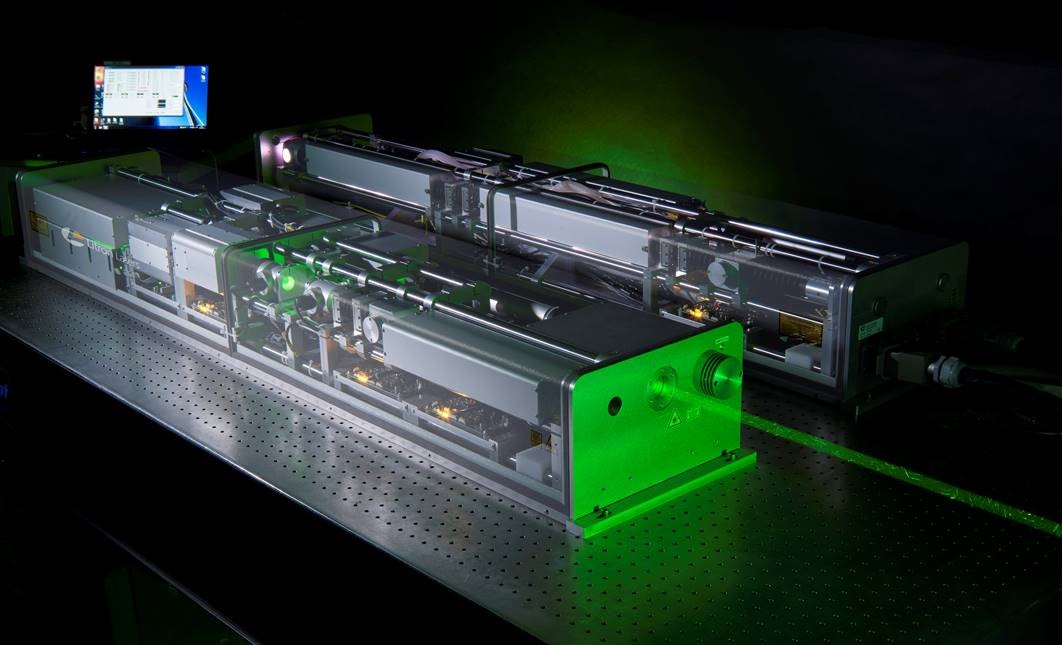Photochemistry is a chemical reaction caused by the absorption of light (photons). It underpins a large range of important biological and industrial processes, from photosynthesis in plants through a host of chemical engineering applications – for example, the manufacture of the antimalarial drug artemisinin. Excitations in molecules also play a key role in devices – for example organic LEDs and organic photovoltaic cells. However, the fundamental science that underpins many of the photophysical and photochemical processes is not understood on the atomic scale.
A group of scientists have been working with ISIS to develop the technique of photo-µSR, which they believe will allow them to watch these processes occur, atom by atom. Their paper has been published in Nature Materials.
Alan Drew from Queen Mary, University of London, one of the corresponding authors on the paper says, “This fundamental science governs many real world processes, both natural, such as photosynthesis, and man-made. In fact industry uses the process all the time, because it works and it’s reliable. But many aspects are not understood at the fundamental level, and this is partly because existing techniques can only tell you half the story. For example, scanning probes have high spatial resolution, to the point where individual atoms can be imaged, but this has to be measured over a long time period. Conversely, various optical spectroscopic techniques have fantastic temporal resolution, but spatial resolution often remains a challenge. Photo-µSR can do both.”
Laser excited muon pump-probe spin spectroscopy (photo-µSR) is a relatively new technique to ISIS, as the laser system was installed on the HiFi muon spectrometer at the end of 2013. This is the first paper to be published based on data since the upgrade. Photo-µSR has been used elsewhere, but uniquely on HiFi, the high fields allow researchers to isolate different quantum mechanical states corresponding to individual carbon atoms and isolate which the light is interacting with.
This research applied the photo-µSR technique to a solvated organic semiconductor based on pentacene, which has a backbone of five fused benzene rings. Recent studies have shown that similar materials, with fewer fused rings, such as anthracene and tetracene react when exposed to light in OLED environments, which could cause their performance to deteriorate. A laser pulse excites the molecules, followed by a muon pulses. Muonium, which forms in the solvent, then chemically reacts with the carbon atoms of the molecule differently, depending on whether the molecule is in the excited state or not. The different carbon atoms have a different spin environment, which is unique for each site, and it is this which identifies each carbon atom and provides spatial information on the photochemical reaction. The relative timing of the muon and laser pulses provides the temporal data. The study provided evidence that a putative excited state with a 1 µs lifetime could be important to the photochemical degradation of TIPS-Pn.

This study is the first step towards realising the full potential of photo-µSR, which in the future could be employed in researching materials for quantum computing to understanding proteins. Credit: Alan Drew
Prof Heathcote, the other corresponding author, says “Importantly our results showed that the response of individual carbon atoms within a molecule to light can be monitored with photo-µSR and tracked over time. It provides both proof that photo-µSR works as a technique, and gives important insights into this fundamental area of science. It is the first step in realising the potential of photo-µSR, and we are already looking at future experiments into materials proposed for use in quantum computing, and looking at amino acids to understand how electron transfer within proteins occurs.”
James Lord is the HIFI instrument scientist from ISIS. He says, "The installation of the laser system to HIFI is a great addition to our capabilities, so I'm delighted to see the first that our first results are now being published. The system is available to all ISIS users and we are keen to encourage users to talk to us about possible proposals using photo-µSR."
Alan Drew et al.
